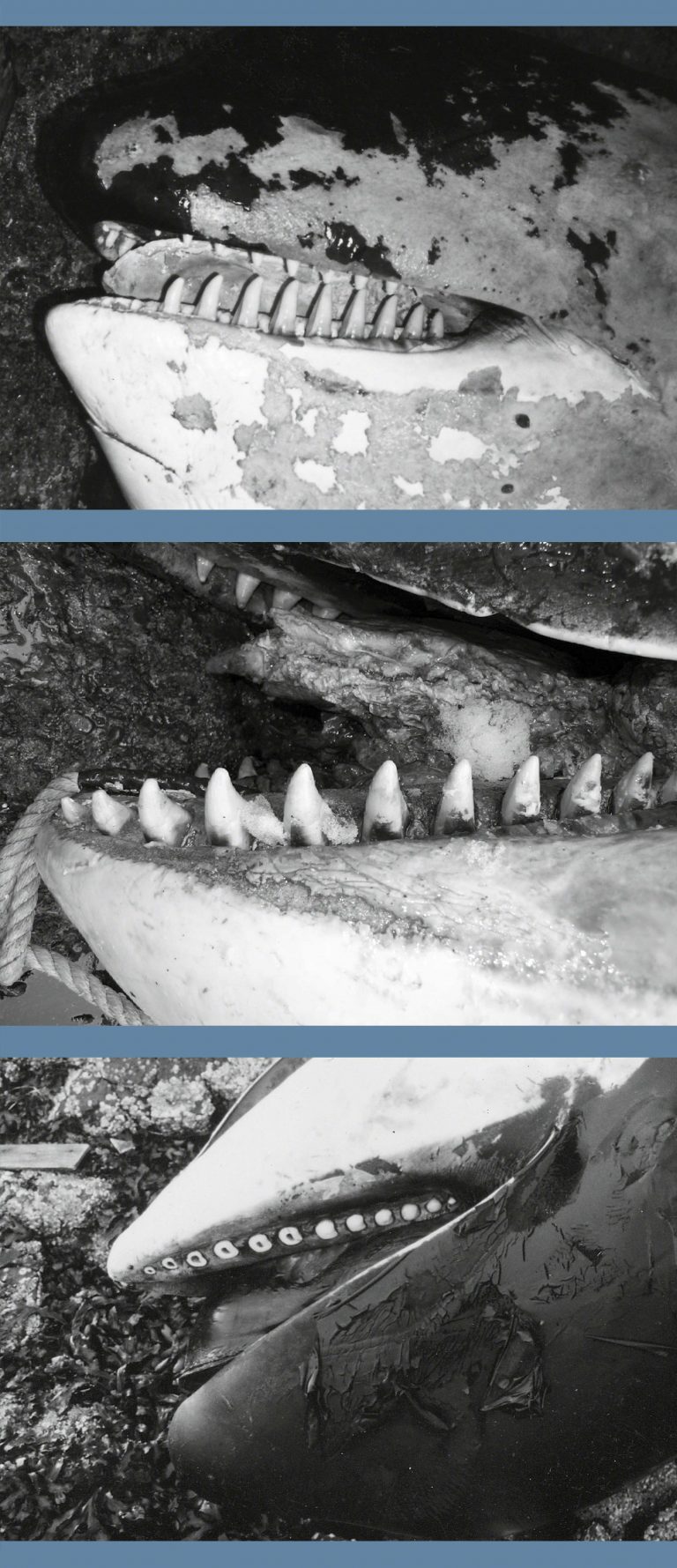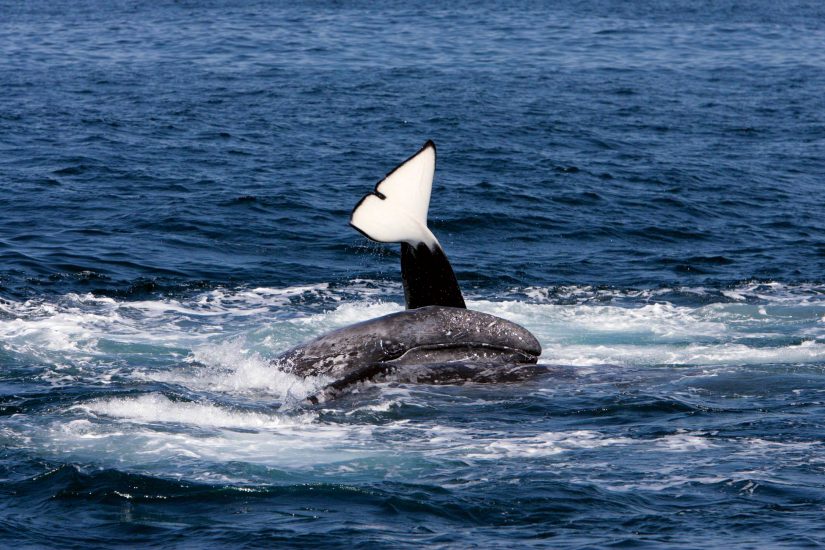Winter is coming
For South Africa’s most southerly white sharks, winter has come in the form of two floppy-finned cetaceans known as Port and Starboard.
I’m in mid-water, surrounded by a vast undersea forest. I move to the edge of the kelp, wrap both hands around a thick stipe and hang like an amphibious monkey, staring out into the great blue-green abyss of False Bay. It’s winter, so the visibility is good, but I am on my own and I don’t feel safe outside the kelp. For most surfers and divers along South Africa’s most southerly coast, going into the water holds a certain edge, and visions of black fins and torpedo-shaped shadows dance menacingly at the fringes of one’s imagination. This is the kingdom of one of the largest populations of white sharks on the planet and even after 10 years of regular diving, for me primal terrors die hard. But somehow, on this particular dive, the ocean feels more benign. Perhaps it’s because my rational mind is in on a not-so-secret secret: there’s a new ruler in the bay and multiple rows of razor-sharp teeth don’t scare it.
For decades, this part of the coast has been an energy-rich haven for white sharks. In winter they feed on healthy populations of naive Cape fur seal pups and in summer they move inshore to feast on shoals of migrating yellowtail fish. Similar patterns have been observed 100 kilometres (62 miles) away at the ‘sharkdom’ of Gansbaai on the Overberg coast. For cage-diving operators, winter should be the season of plenty with good visibility, an abundance of white sharks and boatfuls of clients, but this season there was hardly a shark to be seen and one company was forced to close down.
What would cause the uncontested king of South Africa’s marine food chain to vanish from his well-established territory? To answer that we need to return to the scene of a series of grisly discoveries made by shark researchers along the Overberg coast.












